Main menu
Common skin conditions

NEWS
Join DermNet PRO
Read more
Quick links
Melanocytic naevi: new classification
Created 2008.
Why have a new classification?
The conventional system has divided melanocytic naevi according to history (congenital or acquired) and histopathology (junctional, compound and dermal location of melanocytes). However clinical diagnosis is often imprecise. Historically, naevi were thought to start as junctional melanocytic nests, and progress to become compound then dermal in time. Careful dermoscopic observation of numerous naevi has shown this theory to be implausible.
Dermoscopy often allows precise diagnosis of different types of melanocytic naevi based on the amount and distribution of pigmentation. Often an individual has many benign naevi that look similar to one another, allowing the ugly duckling that looks different from the others to be recognised as a melanoma.
The new classification has seven groups. Clinicians may wish to use it when describing dermoscopic features of melanocytic naevi.
Globular (congenital) naevus
The globular naevus is characterised dermoscopically by a globular pattern. These lesions are present at birth or arise in childhood, and are likely to be constitutionally predetermined. They persist lifelong.
| Age | Clinical features | Dermoscopic features | Histopathology |
|---|---|---|---|
| Childhood | Small: brown, flat, symmetrical, <15 mm. |
|
|
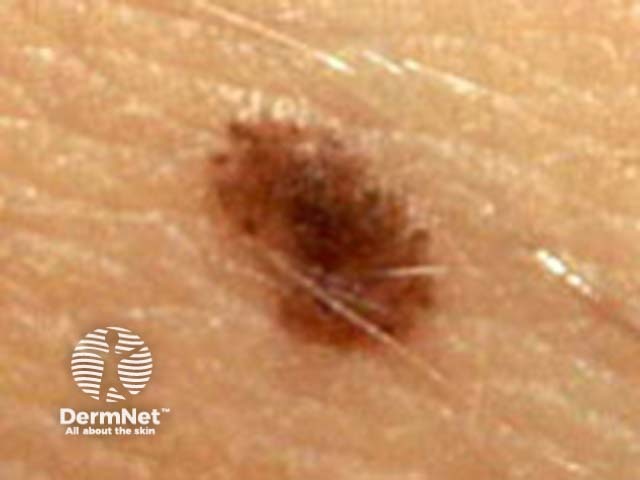 Globular pattern clinical |
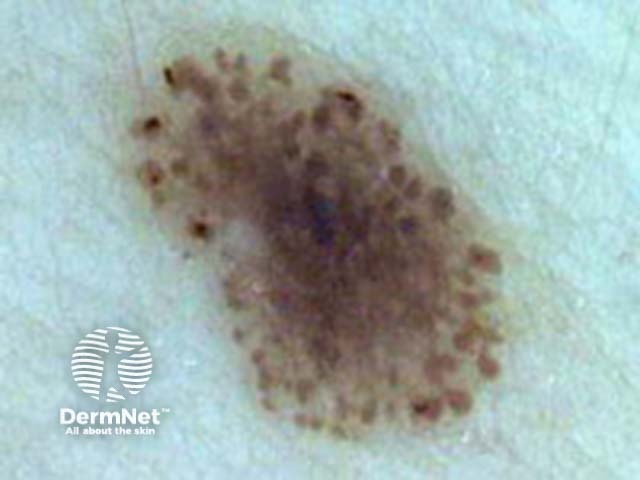 Globular pattern dermoscopy |
||
| Large: flat to elevated with verrucous/hairy surface, >15 mm. True congenital naevi. |
|
||
 Globular pattern clinical |
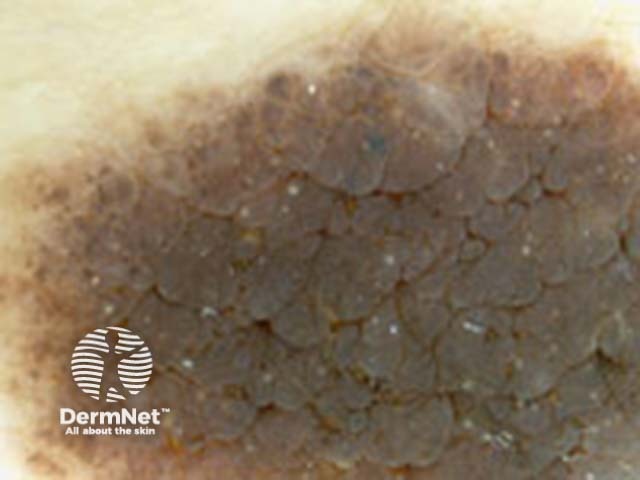 Globular pattern dermoscopy |
||
| Adult | Elevated, papillomatous Congenital Unna naevus |
|
|
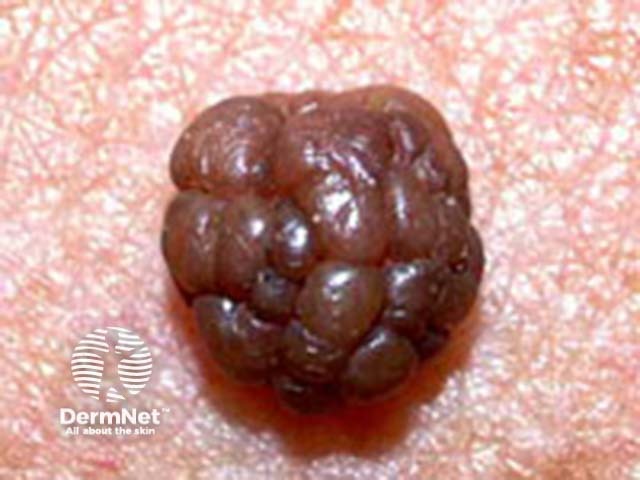 Globular pattern clinical |
 Globular pattern dermoscopy |
||
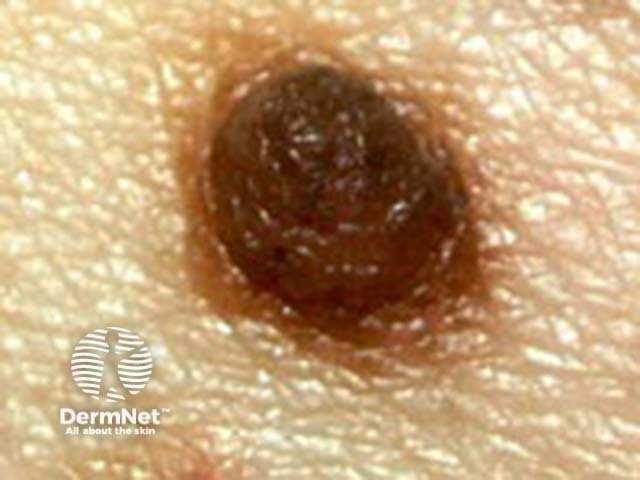 Fried-egg pattern clinical |
 Fried-egg pattern dermoscopy |
More images of globular (congenital) naevus ...
Reticular (acquired) naevus
The reticular naevus is characterised dermoscopically by a reticular or network pattern of pigmentation. They arise during childhood and adult life, most likely triggered by sun exposure or other factors. They have a tendency to regress in later life and may disappear.
| Size | Clinical features | Dermoscopic features | Histopathology |
|---|---|---|---|
| Small |
|
|
|
 Reticular pattern clinical |
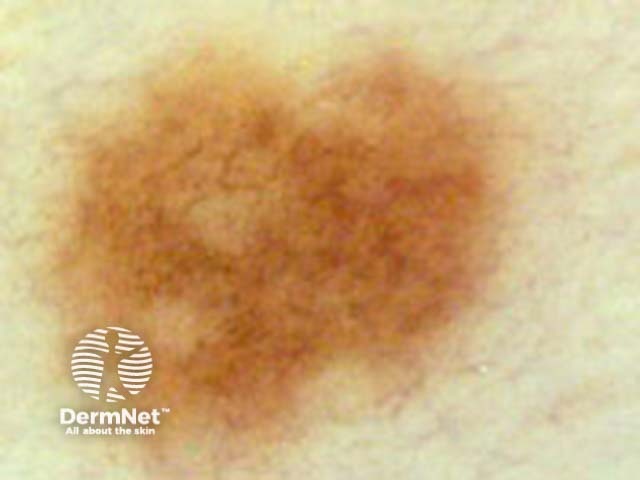 Reticular pattern dermoscopy |
||
| Large |
|
|
|
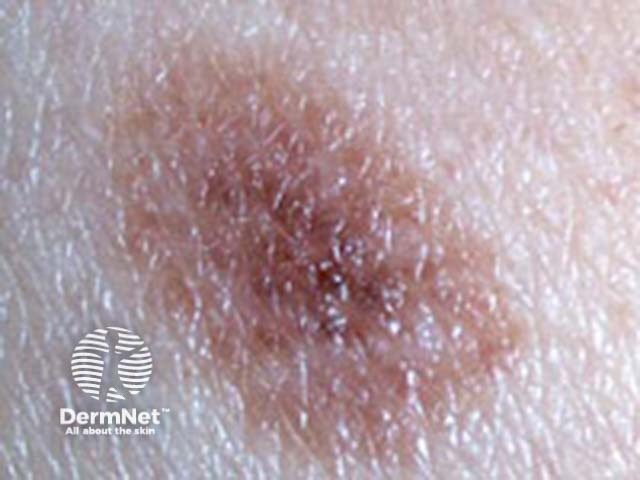 Reticular pattern clinical |
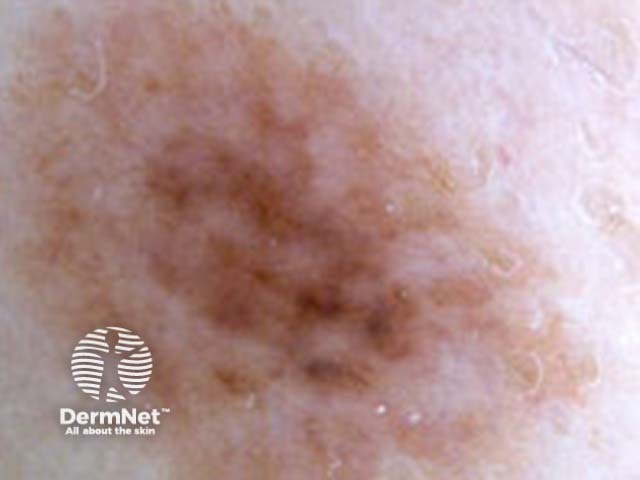 Reticular pattern dermoscopy |
More images of reticular (acquired) naevus ...
Starburst (Spitz/Reed) naevus
The starburst (Spitz/Reed) naevus has two distinct dermoscopic patterns. These lesions are uncommon, and may arise in children or young adults. Changing lesions may be difficult to distinguish from melanoma, and should be excised.
| Type | Clinical features | Dermoscopic features | Histopathology |
|---|---|---|---|
| Pigmented |
|
|
|
 Starburst pattern clinical |
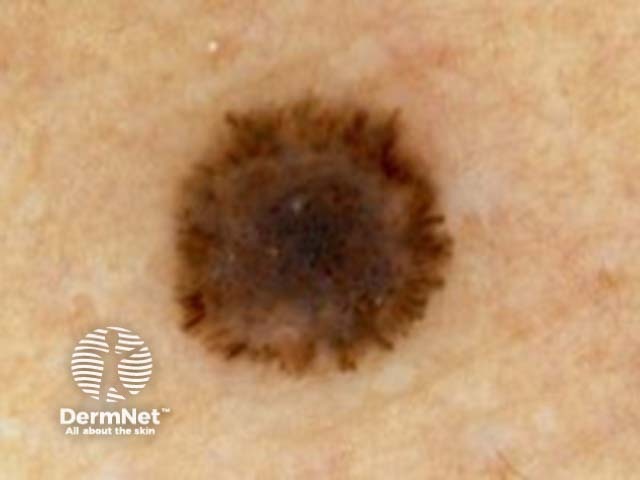 Starburst pattern dermoscopy |
||
| Nonpigmented |
|
|
|
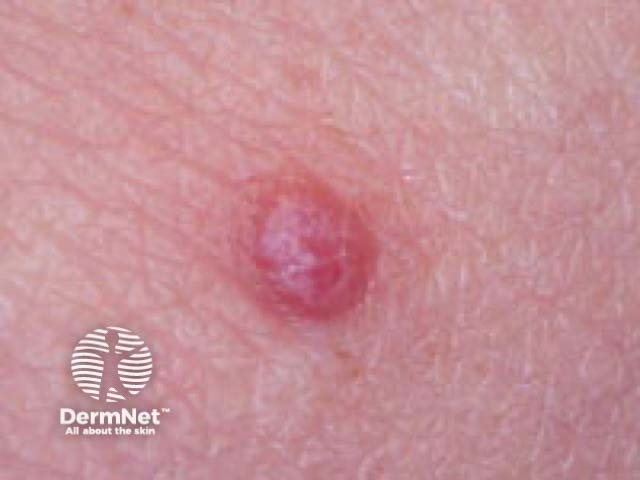 Spitz naevus 2 macro |
 Spitz naevus 2 dermoscopy |
Blue (homogeneous) naevus
The blue naevus is dermoscopically characterised by homogenous steel blue colour. Blue naevi may be congenital or acquired and are persistent.
| Clinical features | Dermoscopic features | Histopathology |
|---|---|---|
| Flat to elevated, blue to black |
|
|
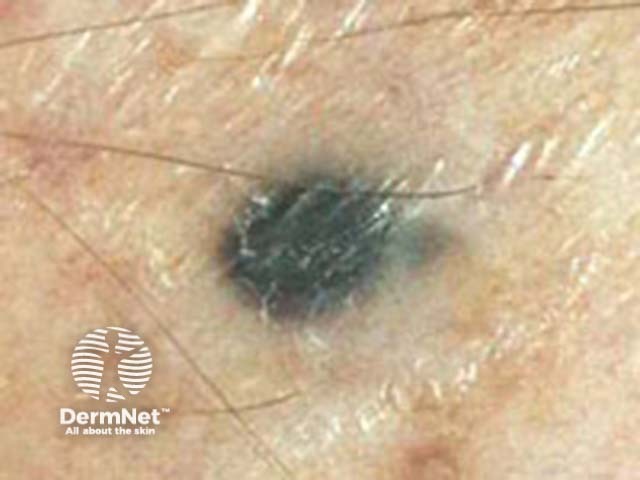 Blue naevus clinical |
 Blue naevus dermoscopy |
More images of blue naevus ...
Site-related naevi
Naevi on palms and soles/nails, and naevi on the face, genitals and nipples have particular dermoscopic features.
| Site | Clinical features | Dermoscopic features | Histopathology |
|---|---|---|---|
| Acral |
|
|
|
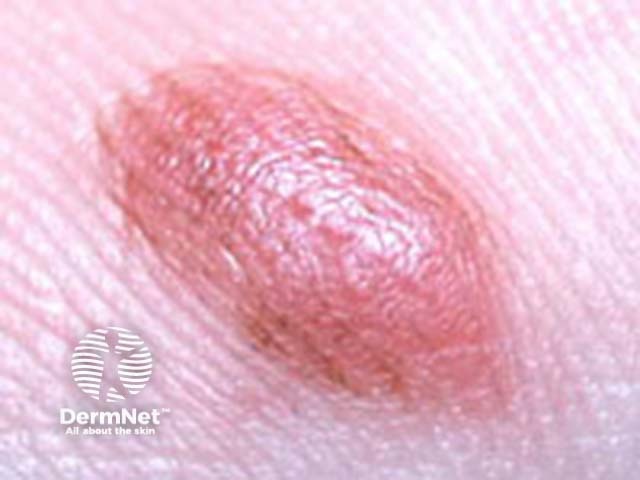 Acral naevus clinical |
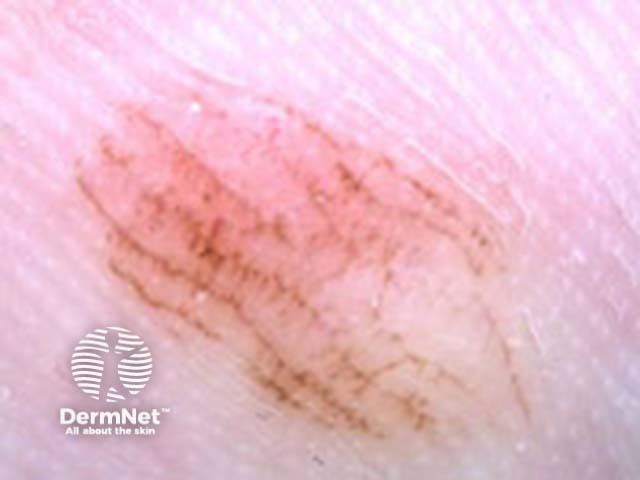 Acral naevus dermoscopy |
||
| Subungual (nails) |
|
|
|
 Nail naevus clinical |
 Nail naevus dermoscopy |
||
| Facial |
|
|
|
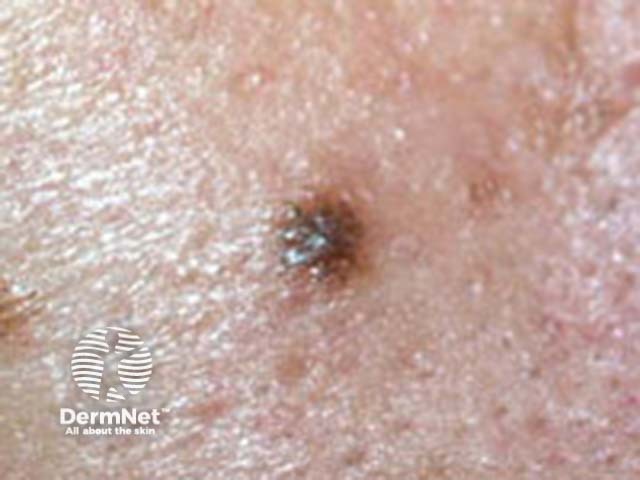 Facial naevus clinical |
 Facial naevus dermoscopy |
||
 Facial naevus clinical |
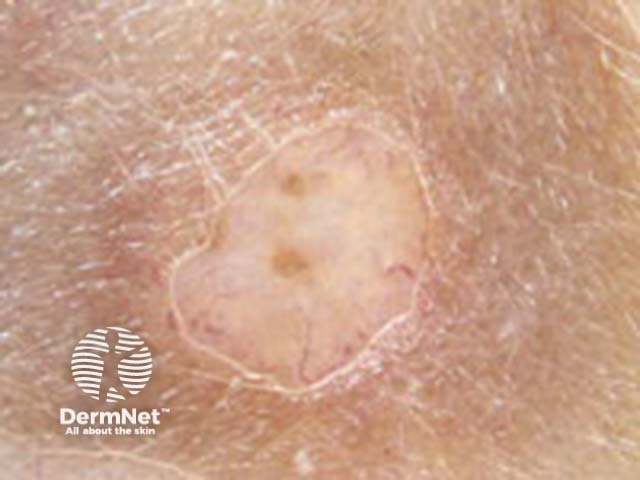 Facial naevus dermoscopy |
||
| Lips | Congenital or prepubertal | ||
 Lip naevus clinical |
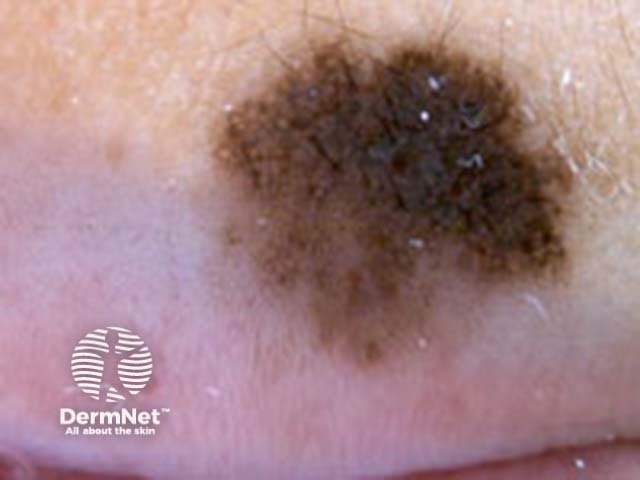 Lip naevus dermoscopy |
||
| Nipple | Congenital or prepubertal | ||
 Nipple naevus clinical |
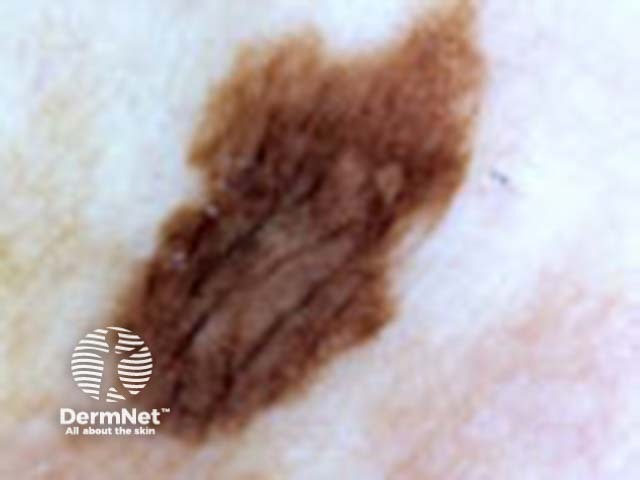 Nipple naevus dermoscopy |
More images of site-related naevi ...
Naevi with special features
This group includes:
- Combined naevi (two types of naevi juxtaposed or merged)
- Halo naevi (uniform lymphocytic reaction)
- Irritated naevi (patchy lymphocytic reaction)
- Cockade naevus
- Naevi with eczematous halo (Meyerson type)
- Recurrent naevi following surgery
| Type | Clinical features | Dermoscopic features |
|---|---|---|
| Combined naevi |
|
|
 Combined naevus clinical |
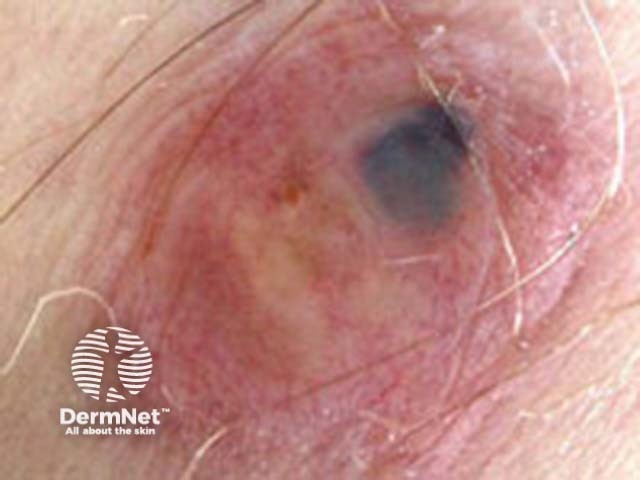 Combined naevus dermoscopy |
|
| Halo naevi |
|
|
 Halo naevus clinical |
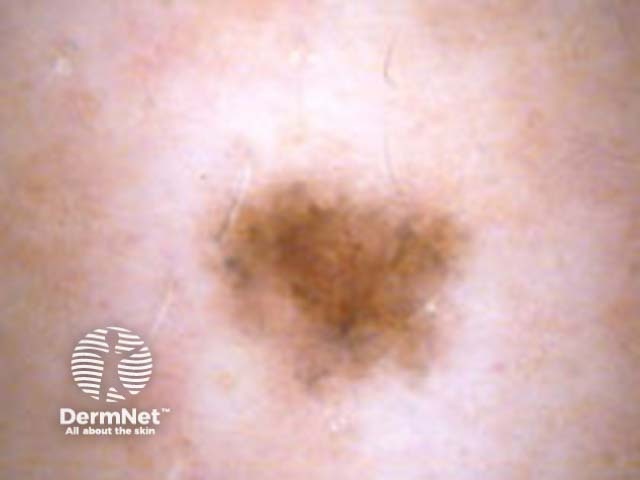 Halo naevus dermoscopy |
|
| Irritated naevi |
|
|
| Cockade naevus |
|
|
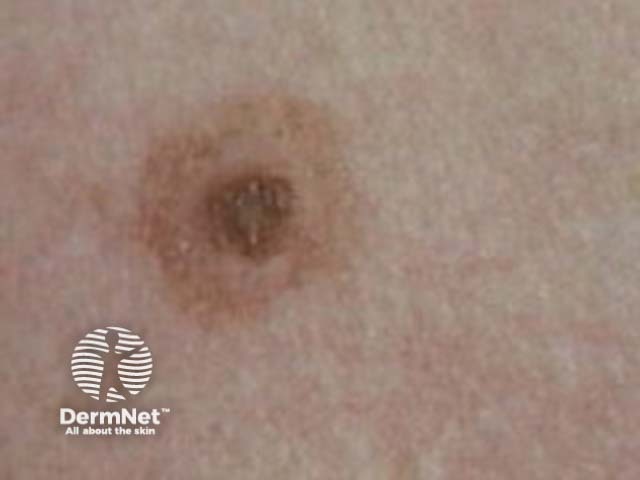 Cockade naevus clinical |
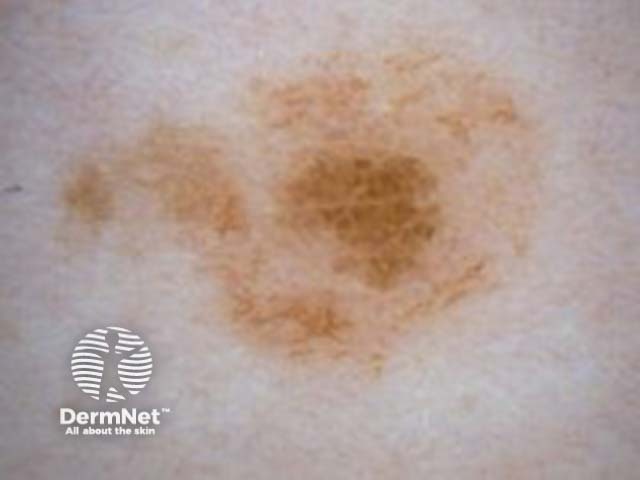 Cockade naevus dermoscopy |
|
| Naevi with eczematous halo (Meyerson type) |
|
|
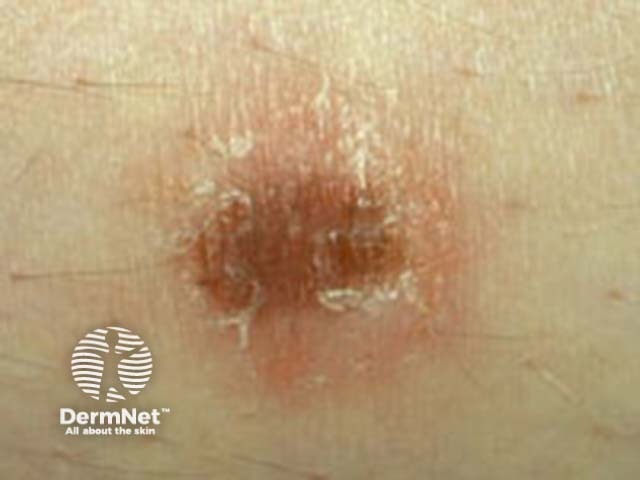 Meyerson naevus clinical |
 Meyerson naevus dermoscopy |
|
| Recurrent naevi |
|
|
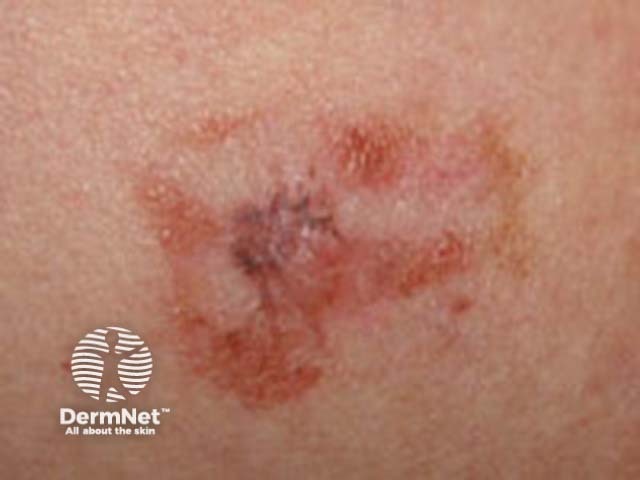 Recurrent naevus clinical |
 Recurrent naevus dermoscopy |
More images of naevi with special features ...
Unclassifiable melanocytic lesions
This category comprises atypical or non-diagnostic lesions, which are often clinically or dermoscopically suspicious of melanoma but are not malignant on histology. They may be superficial or nodular.
Atypical naevus clinical Atypical naevus dermoscopy Dysplastic naevus clinical Dysplastic naevus dermoscopy 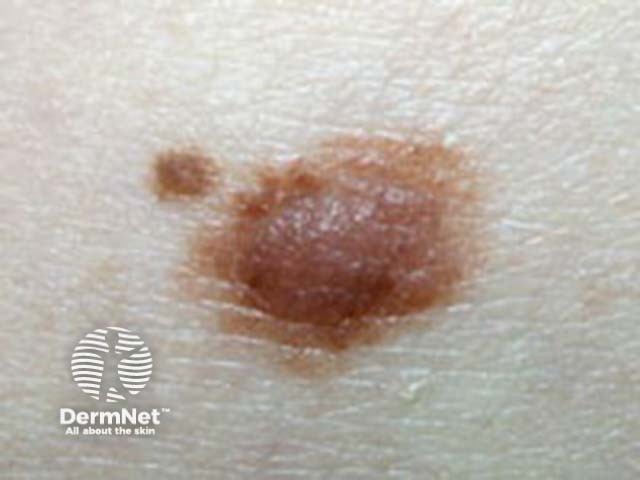

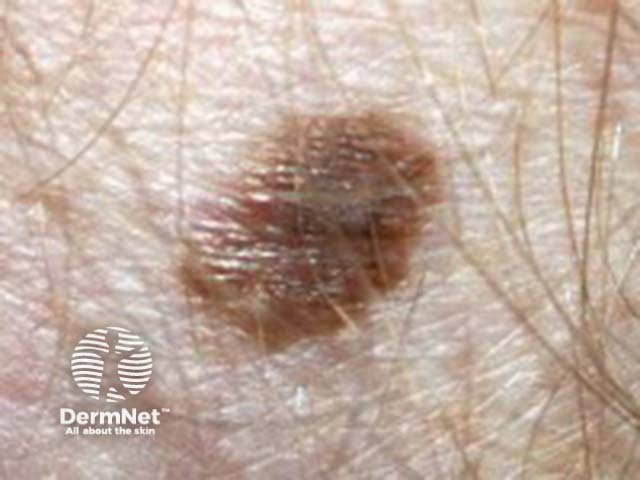

More images of unclassifiable naevi ...
Activity
Classify the next fifty naevi you examine.
References
- Argenziano G, Zalaudek I, Ferrara, G, Hofmann-Wellenhof R, Soyer HP. Proposal of a new classification system for melanocytic naevi. British Journal of Dermatology 2007;157:217-227. Medline.
- New Classification of Melanocytic Nevi Based on Dermoscopy – Medscape article January 2008
On DermNet
- Moles
- Atypical naevi
- Dermoscopy
- Dermatoscopy quizzes
- Dermatoscopy Information for patients
- Dermatoscope overview
- Image acquisition
Books about skin diseases
See the DermNet bookstore
